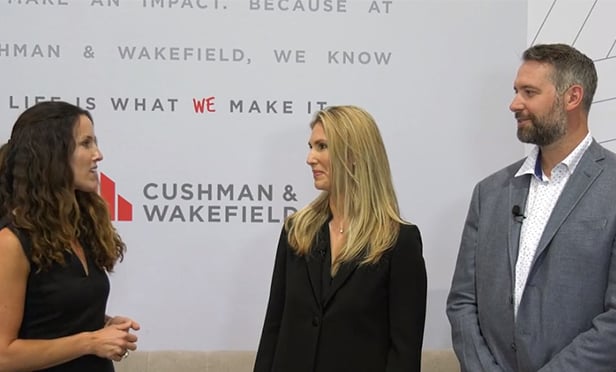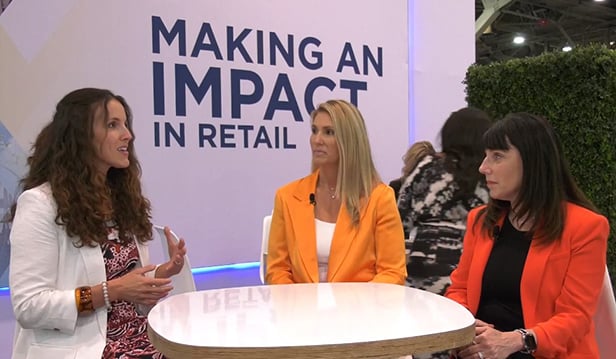SAN DIEGO—Libraries, private phone rooms, sound-buffering equipment and domed furniture are allowing office users with open floor plans to provide employees what they need to do concentrated work or have private conversations, experts tell GlobeSt.com. While the breaking down of cubicles and closed doors continues in today's corporate work environment, many companies are now putting in areas where employees can get quiet time or work in small groups without distracting others. Synergy One Lending recently moved into a 10,000-square-foot space in San Diego's Mission Valley submarket with this in mind. We spoke exclusively with Synergy One's co-founder and CFO Tyler Larsen, about the firm's new space and how it incorporates private/quiet zones, and Tom Van Betten, managing director, tenant representation, for Cushman & Wakefield, about how this trend is taking hold.
GlobeSt.com: Tyler, how did you address the problem of not having enough private and quiet spaces in your office?
Larsen: Our business is mortgage banking, and we came from an environment where we had cubes for everyone. The workstations were a decent height, about three-quarters, so everyone had their own space and a little privacy. This developed into horseshoe space, where two individuals were working side by side in a pod. These were good-sized workstations, but we were moving into a space that we were almost going to fill right out of the gate if we used the same format. My brother and I founded the company, and we met with some brokers in the mortgage space in New York and wondered how they got their people to sit in a benching station, elbow to elbow with someone right next to them. We did some research on it, and one of the newest entrants in that space made their benching stations a little bigger with a little partition between the spaces—so it still felt kind of open.
We moved into a ground-floor space with lots of windows and light. We wanted an open feeling, but we needed to fit as many people as we could—in the mortgage field, your biggest costs are people and facilities. If interest rates go up, our revenue drops, which could be disaster if we're paying more than necessary for space. We never wanted to be in that type of environment, but in order to fit as many people as we could, we decided to go with benching stations, but make them beautiful. We ordered some new and bought some used. We're in a beautiful workspace with high ceilings and glass everywhere-it's very collaborative and has a tech-type feel. We needed that look to convince our employees to do this.
In addition, we put in phone rooms in little sections of the space. This was unusable space in the suite where we put additional walls up and made phone and conference rooms. There are three conference rooms and some private offices.
GlobeSt.com: Does this trend of needing areas for quiet time or working in small groups represent backlash to the collaborative-space trend?
Van Betten: We're starting to see a pullback from all this open space. People need to have private conversations or even do concentrated tasks—the new term is concentration; it's becoming a buzzword because people are having challenges finding spaces to do that. These phone rooms, which are smaller than a private office, contradict what typical landlords want—they want utility in their space that will outlive one or two tenants, and they're worried they're going to have to rip them out for the next tenant. But the trend is not going away. Landlords are behind what tenant demands are.
A couple of other ideas we've seen put into practice include a library. Perch, in its corporate headquarters, put one in, and it has the same rules as the libraries we grew up knowing: no talking or cell-phone use. Another concept that I haven't seen as much of is furniture systems—chairs that have a dome over them. It may be San Francisco cutting-edge, Facebook kind of stuff, but it works like a high-backed booth in a lunch room. It's shared space, but people know not to disrupt or distract you because your furniture shows you're focused on doing a concentrated task.
There's a lot of pushback with all the open spaces because they don't give people places to be private. They end up going to the fire escape or the janitor's closet to have a private conversation, and productivity goes down. The CFO sees more people in the same amount of space and likes it because the square footage per person is down, but the more important metric is productivity. Finding places to work quietly becomes a top priority.
GlobeSt.com: What should developers and interior designers be aware of regarding this need among office users?
Van Betten: What's happened in the past is that people want to go to the open plan to cut footprint down, but then get mutiny because no one has thought about it. Designers are now having companies thinking about this stuff before designing the space. They ask, “How often are people on the phone? Is background noise a challenge? Where can they go for a focused task or a private phone call?” Good designers vet this out before putting design pencil to paper. Companies, users haven't thought enough about it. Developers need to realize that the future is not going to look like the past. The whole creative-space, open-plan trend used to be kind of out there, but now it's fairly mainstream. The next issue is who is paying for updating the interior of the space? We're right in the middle of that challenge right now.
GlobeSt.com: What else should our readers know about this topic?
Van Betten: Sound-masking or –buffering technology is becoming much more available. Employees can also adjust the air conditioning to make more noise above them, and there are white-noise or sound-buffering machines so people can start to have private or semi-private conversations at their cube.
© Touchpoint Markets, All Rights Reserved. Request academic re-use from www.copyright.com. All other uses, submit a request to [email protected]. For more inforrmation visit Asset & Logo Licensing.






